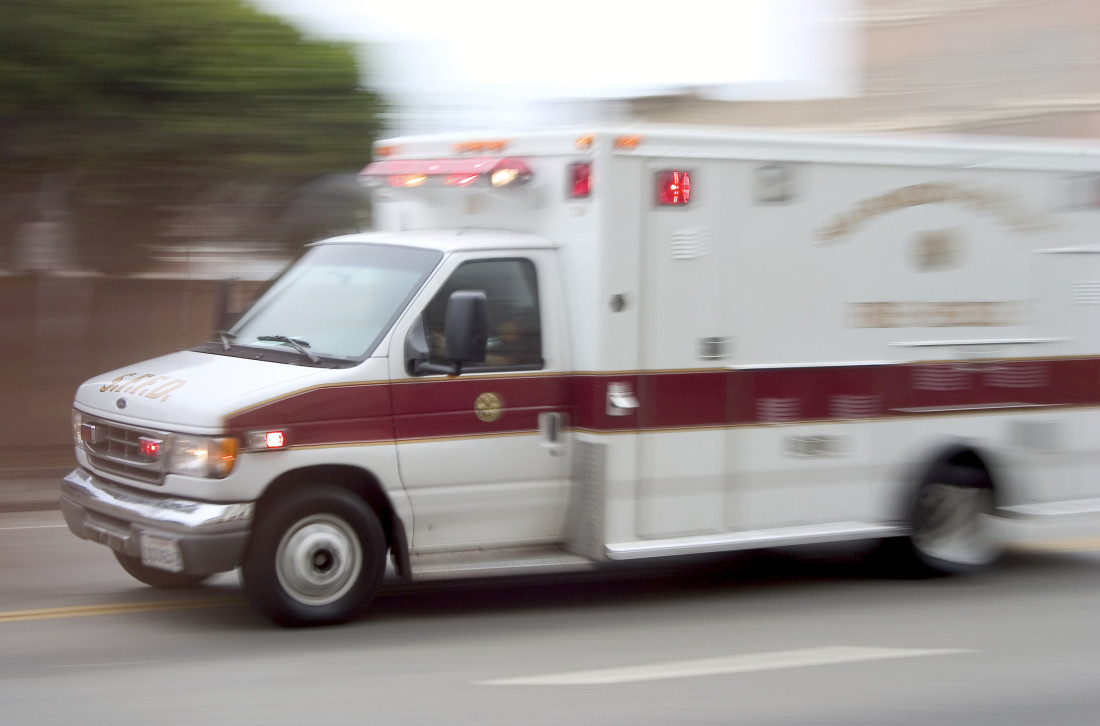The Workers' Compensation Issues Raised by Coronavirus Pandemic and Michigan's Newly Promulgated Emergency Rules for "First Response Employees"
 The Current Context
The Current Context
The novel Coronavirus (“COVID-19”), now classified as a full blown pandemic by the World Health Organization, is projected to continue spreading across Michigan and the United States over the next few months. In less than a month, the global number of confirmed COVID-19 cases has tripled from about 75,000 cases on February 20, 2020, to more than a quarter million cases as of Friday, March 20.
The Washington Examiner reports that the death toll surpassed 10,000 last week. The World Health Organization has warned of the likelihood of continued “exponential growth.”
This growth can be stemmed, suppressed, or stopped entirely through a number of actions that we, as a society, have the ability to take -- for example, social distancing, temporary closure of businesses, restrictions of travel, etc. The more successful these types of interventions are, the more “spread-out in time” the infection will be among the public -- in other words, the “curve will be flattened.”
This “curve,” researchers and media outlets are talking about, refers to the projected number of people who will contract COVID-19 over a certain period of time -- this is not a “hard prediction” of how many people will definitely be affected, but a theoretical number that is used to model the virus’ spread. Of course, such a curve will take on different shapes, depending on the virus’ infection rate. It could be a steep curve in which the virus spreads exponentially and quickly, or it could be a flatter curve that assumes the same number of people ultimately get infected, but just over a longer period of time. Slowing down the infection rate -- which “flattens the curve” -- will relieve some of the immediate stress to healthcare systems.
The virus itself, the pandemic, and our efforts to “flatten the curve” are creating a vast array of factual and legal issues. In the workers’ compensation arena, we know that employers, and their insurers, may soon be faced with a large number of workers’ compensation claims where the claimed disability arises from the effects of their employees’ contraction of COVID-19.
The Issues This Creates
Here are some of the issues you will encounter:
- Whether contraction of the Coronavirus (and complications thereof) will be considered an “ordinary disease of life” in most contexts -- if so, then the question will become whether MCL 418.401(2)(b) of the Workers’ Disability Compensation Act would therefore exclude COVID-19 from coverage of the Act. That section states in pertinent part that “[a]n ordinary disease of life to which the public is generally exposed outside of the employment is not compensable.” Moreover, there is an issue regarding whether this exclusion (of “ordinary” diseases of life from compensability) applies only where the infected employee is claiming his COVID-19 is an “occupational disease” -- or is the exclusion equally applicable to those cases where the infected employee is claiming his contraction of COVID-19 is a “personal injury.” Whether contraction of COVID-19 constitutes “personal injury” or “occupational disease” will vary, depending on the facts underlying the claim.
- Whether, as the virus spreads, an employee would ever be able to establish, by a preponderance of the evidence, that his/her actual contraction of the virus occurred during the “course of employment” -- which is the first of the two statutory “work-connection” prerequisites for compensability. This will likely be a heavy burden for employees who have also been exposed to COVID-19 at home, while at the grocery store, while retrieving the mail, while at the gas station, while at a physician’s office, etc.
- Whether, as the virus spreads, an employee would be able to establish, by a preponderance of the evidence, that his/her contraction of the virus “arose out of” his/her employment -- which is the second of the two work-connection evidentiary prerequisites. Historically, some jurisdictions, including Michigan, have been inclined to incorporate an “increased risk” test to determine whether an injury or disease “arose out of” the employment relationship. We will need to determine which classes of employees are at “increased risk” of contracting COVID-19 -- health care workers, first responders, police officers?
- The DOL published a document providing practical guidance for preventing the spread of COVID-19 designed for employers. The document actually breaks down which types of occupations have a very high exposure risk, a high exposure risk, a medium exposure risk, and a lower exposure risk.
- Very high exposure risk jobs are those with high potential for exposure to known or suspected sources of COVID-19 during specific medical, postmortem, or laboratory procedures". Please see the DOL document for their listing of jobs that fall within this category.
- High exposure risk jobs are those with high potential for exposure to known or suspected sources of COVID-19. Please see the DOL document for their listing of jobs that fall within this category.
- Medium exposure risk jobs are those that require frequent and/or close contact with (i.e., within six feet of) people who may be infected with SARS-CoV-2, but who are not known or suspected COVID-19 patients. Please see the DOL document for their listing of jobs that fall within this category.
- Lower exposure risk jobs are those that do not require contact with people known to be, or suspected of being, infected. Please see the DOL document for their listing of jobs that fall within this category.
And, should a strong showing of “increased risk” relieve the infected employee of the obligation to prove that the actual contraction of the virus occurred during the “course of” employment? Generally, Michigan has viewed the work connection requirement as binary -- requiring proof, by a preponderance of the evidence, of both the “course of” and “arising out of” elements.
- Whether, as the virus spreads, workers who are permitted -- or perhaps, under current circumstances, now required by the employer -- to work from home would ever be able to establish that their contraction of COVID-19, while working in their home, is compensable? The disposition of the at-home worker’s claim of work-related COVID-19 will raise a whole list of unique issues:
- What activities was the at-home worker actually performing at the time he/she contracted the virus?
- Was the worker required to work at home, or was it permitted for his/her convenience?
- Did the at-home work arrangement place the worker at an increased or perhaps decreased risk of contracting the virus?
Claims examiners, and judges, will undoubtedly have to consider all of these factors when determining compensability -- disposition will be heavily fact-dependent. Please contact a member of our Workers’ Compensation Practice Group with your questions -- we are here to help.
The Newly Promulgated Emergency Rules Establishing A Conclusive Presumption of Compensability For “First Response Employees”
On March 10, 2020, Michigan Governor Gretchen Whitmer declared a State of Emergency in response to the COVID-19 pandemic. On March 19, 2020, the President of the United States declared a National Emergency in response to the COVID-19 pandemic.
Because Governor Whitmer determined that employees working in the health field, first responders, and those providing health services during this time are the most susceptible to the exposure to this virus she, in tandem with the Director of the Department of Labor and Economic Opportunity (“Director”), promulgated Emergency Rules (“Rules”) to “provide guidance to employers, carriers, or employees on the treatment of exposure to COVID-19 with respect to workers’ compensation coverage.” These new Rules were enacted pursuant to the Agency Director’s rulemaking authority. Governor Whitmer concurred in the Director’s Emergency Rules. Those Emergency Rules were filed with the Secretary of State on Wednesday, March 18, 2020, and “shall remain in effect for six months.” Thereafter, they are potentially renewable for another six months.
These Emergency Rules create a new, absolute presumption that certain “first response employee(s)” have sustained a personal injury arising out of and in the course of employment under certain defined circumstances. In this regard, a “first response employee,” as set-forth below, is presumed to have suffered a personal injury that arises out of and in the course of employment, if the first response employee meets any one of the following criteria:
- Is quarantined at the direction of the employer due to confirmed or suspected COVID-19 exposure.
- Receives a COVID-19 diagnosis from a physician.
- Receives a presumptive positive COVID-19 test.
- Receives a laboratory-confirmed COVID-19 diagnosis.
As used in the new Emergency Rules, “first response employee” means any of the following:
- A person working in a health facility or agency as defined in the public health code, 1978 PA 368, MCL 333.1101 to 333.25211.
- A person working in a health care organization as defined in R 418.10108(x).
- A person working in an industrial medicine clinic as defined in R 418.10108(bb).
- A person working as a practitioner as defined in R 418.10109(l).
- A person working in a capacity described in section 161(1)(c) to (j) of the Workers’ Disability Compensation Act of 1969, 1969 PA 317, MCL 418.161(1)(c) to (j).
- A member of the state police or an officer of the motor carrier enforcement division of the department of the state police.
Clearly, the class of “first response employee(s)” is very broadly defined in the Rules. It includes a wide-array of employees of healthcare organizations, industrial medicine clinics, and health care providers, as well as any person working in the capacity described in sections 161(1)(c) to (j) of the Workers’ Disability Compensation Act. Those sections of the Act include police officers, firefighters, on-call members of fire departments of counties, cities, villages, and townships, safety patrol officers, volunteer civil defense workers, licensed volunteers, etc. If you are not sure whether one of your claimants is a delineated “first response employee,” please contact us.
These Emergency Rules create an irrebuttable presumption of compensability. In this regard, a first response employee is considered to have sustained a “personal injury arising out of and in the course of employment” if the employee meets any of the delineated criteria, including an employer-mandated quarantine, COVID-19 diagnosis, a presumptive positive COVID-19 test result, or a laboratory confirmed COVID-19 diagnosis. These new Emergency Rules do more than provide “guidance to employers, carriers, or employees in the treatment of exposure to COVID-19 with respect to workers’ compensation coverage.” Rather, these Rules completely relieve first response employees as defined in the Rules from proving that they contracted COVID-19 in the course of employment, or that the contraction of the COVID-19 virus arose out of employment. Moreover, the Emergency Rules state in pertinent part:
A denial of a claim under these Rules presumptively creates non-compliance with the Workers’ Disability Compensation Act (citations omitted) and is subject to penalties under section 631 of the Workers’ Disability Compensation Act of 1969 (citations omitted).
The penalties delineated in section 631 are severe. They include revocation of the licensure of an insurer or of an employer’s status as a self-insured.
In promulgating these Emergency Rules, the Director of the Department of Labor and Economic Opportunity, and the Governor, have imposed a huge, unanticipated liability on a small class of employers and their insurers. While workers’ compensation schemes have historically been no-fault in nature, these Emergency Rules take things one giant step further by imposing liability on employers of first responders without the usual required proof of a connection between the workplace and the injury/illness. As noted, the Rules create an absolute presumption. Even the new first responder post-traumatic stress syndrome (“PTSD”) legislation recently enacted in many states, and proposed in Michigan, provides only a “rebuttable presumption” of a work relationship between PTSD and events within the course of employment. The statutory presumption of compensability may be rebutted, with evidence to the contrary, by the employer. The Emergency Rules provide no such opportunity for employers. The Rules create a “strict liability.”
If you have any questions about the impact of these new Emergency Rules, or whether a claim you are handling is affected, please contact a member of our Workers’ Compensation Practice Group.
Alicia Birach...248.785.4172...abirach@fosterswift.com
Brian Goodenough (Practice Group Leader)...517.371.8147...bgoodenough@fosterswift.com
Mike Sanders...517.371.8210...msanders@fosterswift.com
Categories: Employment, Health Care Reform, Labor Relations, Workers' Compensation

Mike is a member of the Firm’s Employer Services practice group. His practice focuses on representing employers, insurance carriers, and third-party administrators in workers’ compensation matters across Michigan. He has experience advising clients on various labor and employment law issues as well.
View All Posts by Author ›
Mike devotes his practice to the representation of employers, insurance carriers, and third-party administrators in workers' compensation matters throughout the state. He is the author of several published law review articles on workers' compensation topics, and he is a frequent lecturer on this topic.
View All Posts by Author ›Categories
- Cybersecurity
- Health Insurance Exchange
- Electronic Health Records
- Nonprofit
- Regulations
- Health Care Reform
- News & Events
- Providers
- Lawsuit
- Accountable Care Organizations
- Legislative Updates
- HIPAA
- Did you Know?
- Licensing
- Pharmacy
- Hospitals
- Fraud & Abuse
- Employee Benefits
- Tax-Exempt Organizations
- Compliance
- Retirement
- Entity Selection, Organization & Planning
- Criminal
- Medicaid Planning
- Employment
- Alerts and Updates
- Physicians
- Audits
- Privacy
- News
- HITECH Act
- COVID-19 and Workers' Compensation
- Digital Assets
- 6th Circuit Court of Appeals
- Medicare/Medicaid
- Patents
- Regulatory
- Contracts
- Long-Term Care
- Insurance
- Workers' Compensation
- Hospice
- Department of Labor
- Labor Relations
- Technology
- Medicare
- Affordable Care Act
- Tax
- Billing/Payment
Best Lawyers® 2021
Congratulations to the attorneys of the Health Care practice group at Foster Swift Collins & Smith, PC for their inclusion in the Best Lawyers in America 2021 edition. Firm-wide, 44 lawyers were listed. Best Lawyers lists are compiled based on an exhaustive peer-review evaluation and as lawyers are not required or allowed to pay a fee to be listed; inclusion in Best Lawyers is considered a singular honor. Health Care practice group members listed in Best Lawyers are as follows:
- Jennifer B. Van Regenmorter, Holland
To see the full list of Foster Swift attorneys listed in Best Lawyers 2021, click here.



 Share
Share